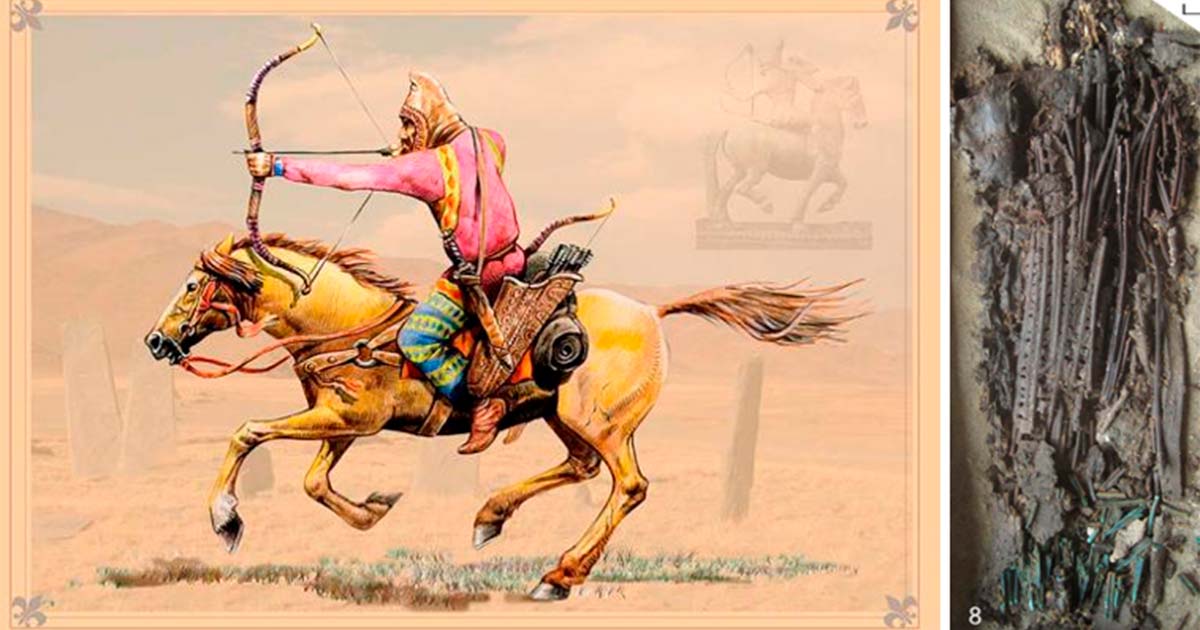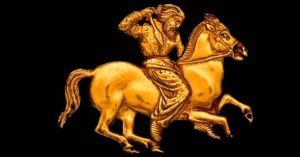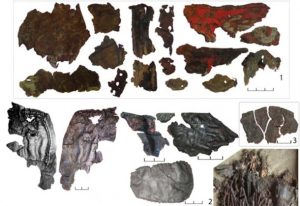Scythian Warriors Made Human Skin Arrow Quivers, According to a Study

A team of anthropologists analyzing leather samples used to craft arrow quivers from Scythian settlements across Ukraine quite expected to see cattle, horse and sheep among their results. But what came as something of a shock was finding two samples human skin.
Leatherface (Gunnar Hansen) was the monstrous human featured in the 1974 horror movie, “ The Texas Chain Saw Massacre,” who wore the skin of his victims as a mask. And in the 1991 horror flick, “ The Silence of the Lambs,” a young F.B.I. cadet seeks assistance from an incarcerated cannibal killer, to help her catch another serial killer who skins his victims.
Now, a multi-institutional team of anthropologists have identified “human skin arrow quivers,” revealing how Scythian warriors employed “pure horror” as an effective tool of psychological warfare, using the skins of their victims to make quivers.

6 Shockingly Successful Ancient Warfare Tactics
The Battle of Pelusium: Psychological Warfare Leads Persians to Victory
Scythian gold plaque depicting a Scythian rider with a spear. (Public domain)
Legacy of the Centaurs
The Scythians, a nomadic culture dominating the Eurasian steppes from the 6th to 3rd centuries BC, were renowned for their mastery of horsemanship, excelling as mounted warriors capable of firing accurately while galloping. Thriving from 900 to 200 BC across Siberia, the Black Sea, and China, they pioneered advanced saddles, outclassing settled civilizations in horseback combat.
Facing and repelling Persians, the Scythians left deep mark on history and mythology, potentially inspiring the Greek centaur myth, a creature blending horse and human, renowned for going crazy after excessive drinking. Scythians, and similar nomadic groups, are known to have contributed to the Greek imagination and the creation of mythical beings like centaurs.
A Scientific Study Based On Semi-Mythological Origins
The new study was led by Dr. Luise Ørsted Brandt, who is affiliated with the University of Copenhagen, Denmark, and it was published on “PLOS ONE”. The researchers first step was to test an account by the Greek historian Herodotus, which said the nomadic warriors repurposed the skulls of their defeated enemies “as drinking cups,” for glugging their victim’s blood.
After a Scythian warrior had had his fill of enemy blood, Herodotus said enemies scalps “were used as hand towels,” and that “the skin and nails from dead enemies’ right hands, were fashioned into arrow quiver covers.” These claims were all unsubstantiated until the publication of this new study, the findings of which bring Herodotus’ ancient words into harsh, and horrific, reality.

Scythian Tactics and Strategy: Devastating Guerilla Archers – Part I
A Warrior’s Face Frozen in Time, Gold, Hemp, Tents and Cheese Tell the Scythian Tale
A selection of the leather object fragments analyzed in the study. (Luise Ørsted Brandt et al. /PLoS ONE
Skinning Humans Was Cultural
The researchers’ analysis was based on 45 leather samples from Scythian arrow quivers, that were gathered from 14 different archaeological sites in southern Ukraine.
The team applied several paleoproteomics techniques, analyzing ancient proteins to gain insights into the biology and evolution of the samples. While most of the quiver skins were from horse, cattle, goat, and sheep, two were human, supporting Greek historian Herodotus’ claims.
The discovery of human skin leather among Scythian settlements is offering valuable insights into their cultural practices and cultish beliefs. Scythian funerary practices often included elaborate burial rituals, and the scientists suspect human skin leather “may have been used to honor or commemorate the deceased”.
Establishing Horrific Myths, As Facts
The new research suggests the human skin leather that was made into arrow quivers was sourced from the bodies of defeated enemies. There is perhaps no better a tool of psychological warfare than to foster a reputation as being a horde of horse-mounted brutalists, drunk and high, with tendencies towards skinning enemies alive.
Herodotus said the Scythians used the scalps of defeated enemies as hand towels after drinking from their skulls, and that they “stripped skin, complete with nails, from the right hands of fallen foes, fashioning coverings for their quivers.” While Herodotus’ historical accounts often face criticism for fusing fact and folklore and sacrificing accuracy for narrative flair, in this case, it turns out he was accurate with the horrifying facts.
In conclusion, the team claim their work cements Herodotus’ claims about the skin-thirsty nature of Scythian warriors, but more so, it demonstrates how they constructed arrow quivers from readily accessible materials, like defeated enemies shattered corpses.